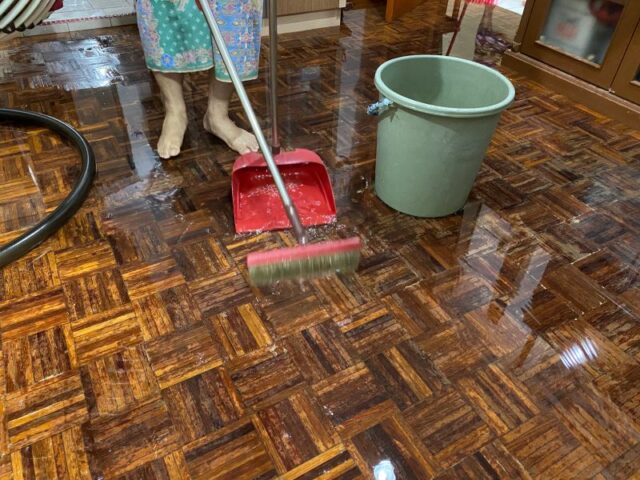According to the experts at Memphis based company, MemphhisClean, water damage can wreak havoc on your home or business, causing structural issues, mold, and rust if not addressed promptly. MemphisClean owners said it’s important to take quick action and to use proper procedures for minimizing long-term damage after any event whether it’s a storm coming thru the Mid-South or a hot water bursting in the attic. Below is a comprehensive guide on what you can do after water damage occurs:
1. Water Removal with a Sump Pump
If you’re dealing with standing water, especially if it’s several inches deep, a sump pump is an invaluable tool. It continuously removes water, helping prevent further damage. You can rent one for short-term use or purchase for long-term needs, especially if you’re prone to recurring water issues.
2. Remove Wet Items
Start by taking any wet furniture, rugs, and other items outside to reduce the indoor humidity. If possible, remove vinyl or linoleum flooring to promote better evaporation. Also, wet insulation under floors should be disposed of as it traps moisture, leading to more damage.
3. Use High-Powered Fans
High-powered fans speed up the drying process by increasing airflow and helping to eliminate moisture from the environment. Avoid using your HVAC system if the ducts have been exposed to water, as they could spread harmful contaminants throughout the property.
4. Open Windows and Doors
When outdoor humidity is low, open your windows and doors to help circulate fresh air through the space, aiding in the drying process. Don’t forget to open closets, cabinets, and remove drawers from furniture to improve airflow in hard-to-reach areas.
5. Preserve Personal Items
To protect sentimental items like wet books or photos, place them in plastic bags and store them in a frost-free freezer. This technique buys you time to properly dry and restore these items, helping prevent mold or mildew.
6. Dehumidify the Area
A dehumidifier is essential for reducing moisture in the air. This is especially useful in rooms that are difficult to ventilate, like basements. Make sure the area is sealed off to prevent additional humidity from entering. A larger dehumidifier can also save time by reducing how often you need to empty its water container.
7. Remove Water From Carpets and Surfaces
Use a Wet/Dry shop vacuum to extract water from carpets and other surfaces. These vacuums are built for wet conditions and can be crucial in saving your carpets. Never use a standard household vacuum for water removal, as it’s unsafe and ineffective.
Get Professional Help When Needed
While these steps can significantly reduce damage, sometimes the situation may be too severe to handle alone. If your property has experienced extensive water damage, consider contacting professional water damage restoration specialists like MemphisClean.
Safety First!
During the cleanup, always prioritize your safety. Wear protective gloves, masks, and proper footwear to avoid injury. Be cautious of slippery surfaces and potential electrical hazards in water-damaged areas.
Monitor for Hidden Damage
Even after cleanup, it’s vital to inspect your property for hidden damage and monitor the affected areas for mold growth in the weeks following. Addressing these issues early can prevent costly long-term problems and ensure a safe, healthy environment.










